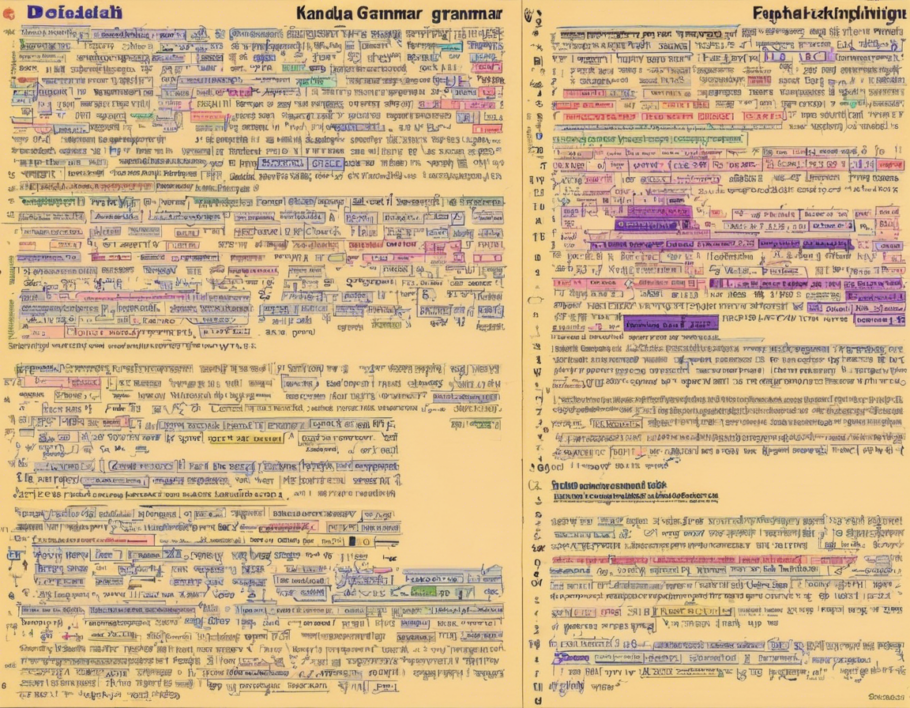Kannada, a Dravidian language spoken predominantly by people in the Indian state of Karnataka, has a rich heritage and is known for its literature, art, and culture. If you are keen to master Kannada grammar, you have come to the right place. In this comprehensive guide, we will delve into various aspects of Kannada grammar, from basic to advanced concepts, in order to help you understand and communicate effectively in this beautiful language.
Introduction to Kannada Grammar
Kannada grammar is a system of rules that govern the structure of the language. Like any other language, it consists of various components such as nouns, pronouns, verbs, adjectives, adverbs, and more. Understanding these components is crucial for speaking, reading, and writing Kannada correctly.
Nouns and Pronouns
Nouns in Kannada can be categorized into masculine, feminine, and neuter genders. They can also be singular or plural. It’s important to understand the gender and number agreement while forming sentences in Kannada.
For example:
– Masculine noun: ಗಣಿ (gaṇi) – boy
– Feminine noun: ಹೆಣ್ಣು (heṇṇu) – girl
– Neuter noun: ಮರ (mara) – tree
Pronouns in Kannada play a vital role in communication by replacing nouns in a sentence. There are different pronouns for different genders and numbers. For instance:
– ಅವನು (avanu) – he
– ಅವಳು (avalu) – she
– ಅದು (adu) – it
Verbs and Tenses
Verbs in Kannada are conjugated based on the subject, object, tense, and mood of the sentence. Understanding verb conjugation is essential for forming meaningful sentences. Verbs can be classified into three classes based on their infinitive endings.
For example:
– ಕೊಟ್ಟೆ (koṭṭe) – to give
– ಬರೆ (bare) – to write
– ಓದು (ōdu) – to read
Tenses in Kannada indicate the time of action in a sentence. There are three main tenses: past, present, and future. Each tense is further divided into simple, continuous, and perfect tenses. Mastering tenses will enhance your proficiency in Kannada.
Advanced Concepts in Kannada Grammar
Cases and Declensions
Cases in Kannada are used to indicate the role of nouns in a sentence. There are seven cases in Kannada: nominative, accusative, genitive, dative, instrumental, locative, and ablative. Understanding cases helps in forming structured and meaningful sentences.
Declensions in Kannada involve the changes that occur in nouns, pronouns, and adjectives to reflect their grammatical function in a sentence. Nouns are declined based on gender, number, and case.
For example:
– Nominative case: ನಾನು ಬರೆಯುತ್ತಿದ್ದೇನೆ (nānu bareyuttiddēne) – I am writing
– Accusative case: ನೀವು ಅವನನ್ನು ನೋಡಿದ್ದೀರಾ? (nīvu avanannu nōḍiddīrā?) – Have you seen him?
Syntax and Word Order
Syntax in Kannada deals with the arrangement of words in a sentence to convey meaning effectively. The basic word order in Kannada is subject-object-verb (SOV). However, due to its flexible nature, Kannada allows for variations in word order based on emphasis and context.
For example:
– Subject-Object-Verb: ನಾನು ಪುಸ್ತಕವನ್ನು ಓದಿದ್ದೇನೆ (nānu pustakavannu ōdidēne) – I have read a book
– Verb-Subject-Object: ಹೌದು ಅವಳು ಆಟ ಆಡುತ್ತಿದ್ದಾಳೆ (hauḍu avaḻu āṭa āḍuttiddāḷe) – Yes, she is playing
Kannada Grammar Resources and Tools
Online Resources
Several online platforms offer free resources to learn and practice Kannada grammar:
– KannadaGottilla: A popular website and app for learning Kannada grammar with interactive lessons and exercises.
– Kannada University: The official website of Kannada University provides research articles and e-resources on Kannada grammar.
– Quizlet: An online platform with flashcards and quizzes to enhance your Kannada grammar skills.
Books and Guides
There are various books and guides available for those looking to delve deeper into Kannada grammar:
– “Learn Kannada in 30 Days” by Pustak Mahal: A beginner-friendly guide to understanding Kannada grammar.
– “Kannada Grammar” by Harold Spencer: A comprehensive reference book for advanced learners of Kannada.
– “Kannada Grammar Simplified” by Ashwath Jwarahalli: A simplified guide to Kannada grammar rules and usage.
Frequently Asked Questions (FAQs)
1. Is Kannada a difficult language to learn?
Kannada, like any new language, may pose some challenges initially. However, with dedication and practice, it can be mastered effectively.
2. How can I improve my Kannada grammar skills?
Consistent practice, listening to native speakers, and using grammar guides and resources can help improve your Kannada grammar skills.
3. Are there any online courses for learning Kannada grammar?
Yes, platforms like Coursera, Udemy, and YouTube offer online courses and tutorials on Kannada grammar.
4. What are some common grammar mistakes to avoid in Kannada?
Common mistakes include incorrect verb conjugations, improper use of cases, and inaccurate word order. Regular practice can help overcome these mistakes.
5. Can I become fluent in Kannada by studying grammar alone?
While grammar is essential, fluency in any language also requires practice in speaking, listening, and reading. Immersing yourself in the language and interacting with native speakers can aid in achieving fluency.
6. Are there any mobile apps for learning Kannada grammar?
Yes, apps like Duolingo, Babbel, and HelloTalk offer lessons on Kannada grammar and vocabulary.
7. How important is pronunciation in Kannada grammar?
Correct pronunciation is crucial in Kannada as it can alter the meaning of words. Paying attention to pronunciation will enhance your overall language skills.
8. What are some effective ways to memorize Kannada grammar rules?
Utilizing flashcards, practicing with native speakers, and engaging in daily language exercises can help in memorizing Kannada grammar rules effectively.
9. Is it necessary to learn script alongside Kannada grammar?
While learning the script can aid in a deeper understanding of the language, it is not essential for mastering Kannada grammar. Focus on grammar and vocabulary can also foster proficiency.
10. Where can I find practice exercises for Kannada grammar?
Websites like KannadaGottilla, Quizlet, and language exchange platforms offer a variety of practice exercises to sharpen your Kannada grammar skills.
In conclusion, mastering Kannada grammar requires dedication, consistent practice, and a willingness to explore the intricacies of the language. By understanding the fundamental components, advanced concepts, utilizing resources effectively, and seeking clarifications through FAQs, you can embark on a rewarding journey towards fluency in Kannada. Happy learning!

